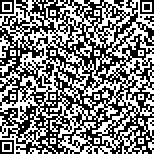| 摘要: |
| [目的]为更精细、更科学地了解农村居民点空间分布特征及其影响因素,从多尺度角度进行对比分析,为农村居民点整理提供依据。[方法]基于空间自相关、核密度分析等方法,以广水市为例,从多尺度角度对2016年广水市农村居民点分布空间分布状况进行对比分析,并引入空间计量回归模型对其影响因素进行探究。[结果](1)对广水市农村居民点进行核密度分析时,搜索半径为1 800m最合理,广水市农村居民点核密度最大值为1426个/km2; (2)对广水市农村居民点核密度估计值从县级、乡镇级、村级3个尺度分别进行全局空间自相关分析,Moran′s I县级=0642 4、Moran′s I乡镇级=0694 3、Moran′s I村级=0808 2,全部表现为空间正相关,村级的空间集聚特征最显著、乡镇其次、县级相对最小; (3)局部自相关分析显示农村居民点核密度估计值高值区分布在城郊乡、骆店乡、马坪镇、长岭镇4乡镇,与该研究的核密度分析结果一致。(4)通过空间计量回归模型分析,农村居民点的影响因素:地形位指数>到城镇距离>到道路距离>到水系距离。[结论]文章从多尺度角度对农村居民点分布特征及其影响因素对比研究,以期为今后同方向的研究提供借鉴,为农村居民点整治、农村居民点空间演变研究、村镇规划、农村土地集约利用、乡村振兴等提供理论方法的支撑。 |
| 关键词: 农村居民点多尺度空间自相关核密度回归模型 |
| DOI: |
| 分类号:K9018 |
| 基金项目:国家自然科学基金项目“江汉平原农村基本公共服务可达性与空间均等化研究”(41371183); 地理国情监测国家测绘信息地理局重点实验室开放基金项目“村落景观格局演变及其预测研究——以湖北省随县为例”(2014NGCM03) |
|
| STUDY ON SPATIAL DISTRIBUTION CHARACTRISTICS AND INFLUENCING FACTORS OF RURAL SETTLEMENTS IN MUTI SCALE |
|
He Ju1,2, Zhang Xuesong1,2※, Deng Zhen1,2, Zhang Han3,4, Zhang Maomao1,2, Liu Yuan1,2
|
|
1.Central China Normal University, The College of Urban & Environmental Sciences, Wuhan , Hubei 430079, China;2. Analysis and Simulation of Geographic Process in Central China Normal University, Key Laboratory of Hubei Province, Wuhan, Hubei 430079, China;3. Key Laboratory of Agricultural Resources and Ecology in Poyang Lake Basin, Jiangxi Province / South Grain and Oil crop Synergy Innovation Center, Nanchang, Jiangxi 330045, China;4. Institute of Land Resources and Environment, Jiangxi Agricultural University, Nanchang, Jiangxi 330045,China
|
| Abstract: |
| This research aims to master the characteristics of the spatial distribution of rural settlements and its influencing factors scientifically, and Carries out a comparative analysis from the multiscale, so as to provide the basis for the rural settlements. Based on the methods of spatial autocorrelation and nuclear density analysis, taking Guangshui city as an example, the spatial distribution of rural residential settlements in Guangshui city in 2016 was analyzed from a multi scale perspective, and the influencing factors were explored by using spatial regression model.The results show that (1) In the analysis of nuclear density of rural settlements in Guangshui, the search radius was 1800m, and the maximum nuclear density of rural residential areas in Guangshui was 14.26/km2; (2)From the global spatial auto correlation analysis of the rural settlements kernel density estimate corp, Moran′s I was 0.6424 at the county level, Moran′s I township level was 0.6943, and village′s Moran′s I was 0.8082, all showed positive correlation, the most significant features of space agglomeration was villages, followed by the towns, and county level was the smallest; (3)From the local auto correlation analysis, it showed that high value of the kernel density estimate of rural settlements was in Chengjiao, Luodian, Maping, Changling towns, and the result was consistent with the study of nuclear density; (4) Through the analysis of spatial regression model, the influencing factors of rural settlements were showed as follows. The topographic digit index > the distance from town to town > the distance from road >the distance from river system. This research explores rural settlements distribution characteristics and influencing factors from multi scale, in order to provide reference for future research in the same direction, and provides theoretical and methodological support for settlements spatial evolution, town planning and intensive utilization of rural land, and rural rejuvenation . |
| Key words: rural settlements multi scale spatial auto correlation Kernel Density regression model |

